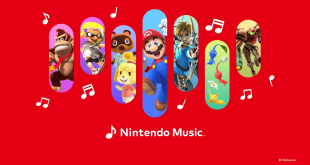Following the launch of the late/fat/hot Fermi, nVidia's engineers buckled down to business and worked really hard to not only improve the rest of the Fermi range that followed, but also to achieve some extraordinary successes with low power parts into the Tegra family. Having seen the Nexus 7 up close and personal, KitGuru was shocked to learn how little traction nVidia has managed in the mobile space. Here's a summary of the latest data, see if you share our surprise.
Roll the clock back only a few years and you would have seen some baffled looks on the faces of visitors to Taiwan's Computex show. Something called Snapdragon was coming and it warranted a big advertising spend. But what is it?
Snapdragon is a complete system on a chip (SoC) from Qualcomm. In turn, Qualcomm is a US-based telecommunications equipment company with annual revenues in the $15Bn range. Nice. Over the last couple of years, it has been in acquisitions-mode and there are even rumours in the market that AMD could be next.
The processing core within Snapdragon is based on ARM's instruction set, so it bears a lot of similarities to Cortex processors. For example, if you benched an S4 Snapdragon SoC, then you would be forgiven for thinking that it's performance characteristics were similar to a Cortex A15. Inherent to these products is the ability to handle 1080p video – using technology bought in from AMD. It also supports Direct X 9 in a way that means Windows 8 should run on it.
Now, in 2012, almost 45% of the world's smartphones are Snapdragon powered and the company is beginning to increase its public profile with a series of events for press and strategic customers. In the global rankings, tucked in behind Qualcomm are Samsung, Texas Instruments, Broadcom, and MediaTek. That raises the question, ‘So why have Qualcomm's SoC chips been so popular?'
The answer lies in the fact that Qualcomm has been way ahead of the game in terms of integrating a powerful communications module into the Snapdragon's SoC. Wi-Fi, GPS, Bluetooth etc are all present on the single chip. This automatically brings with it benefits relating to power-usage, speed of integration and simplicity of design with Chinese OEM manufacturers.
So what are the latest figures/trends and what are the implications for nVidia, as the graphics giant continues to try and position itself for a larger share of a larger market?
In a nutshell, nVidia got close to a 2% share of the smartphone market at the start of 2011 and now, 7 quarters later, it is still near a 2% share of that market. For a company as dynamic as nVidia, that's not progress.
Strategy Analytics has been working out the answers to marketing questions for more than 40 years. One of its directors is Stuart Robinson, an electronic engineering graduate from Southampton University, who spends a lot of time looking at the mobile market and pondering the nature of the phonic universe – while trying to predict what will happen next. Stuart has an opinion on why nVidia is where it is and what it needs to do in order to progress. No surprise, it involves Jen Hsun Huang moving a lot closer to Qualcomm in terms of overall design concept.
Stuart's strategic analysis is, “We believe nVidia continues to miss the large addressable market as it currently lacks baseband-integrated applications processors”. Insightful stuff.
The global market for smartphones could reach somewhere close to 600 million units by the end of 2014, so it's well worth while investing in R&D for this kind of future. Not only for nVidia, but also for Intel and AMD.

KitGuru says: With its acquisition of technology from companies like Aegia in the past, alongside its close relationships with Taiwan's major FABs, nVidia is capable of creating a new version of Tegra that will have Stuart's recommended specification. Right now, that looks like ‘Tegra 5', code named Grey (after Class 5 mutant Jean Grey in the X-Men series), is due for release in September 2013. Let's hope that Snap-the-magic-Dragon has not flown off into the distance by then, otherwise some nVidia engineers might experience The Phoenix.
Comment below or in the KitGuru forums.
 KitGuru KitGuru.net – Tech News | Hardware News | Hardware Reviews | IOS | Mobile | Gaming | Graphics Cards
KitGuru KitGuru.net – Tech News | Hardware News | Hardware Reviews | IOS | Mobile | Gaming | Graphics Cards


